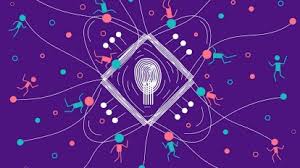19 April 2025 Indian Express Editorial
What to Read in Indian Express Editorial( Topic and Syllabus wise)
Editorial 1 : The Adolescent at Home
Context: Mental Health of Youth
Introduction: According to NCRB data, over 40,000 student suicides reported in the past 5 years and as per National Mental Health Survey, 2016, 1 in 10 adolescents suffer from a mental health disorder. Less than 0.5% of India’s health budget allocated to mental health. This disproportionately affects India’s more than 250 million youth under 20.
Key Contributing Factors
- Academic Pressure
- High-stakes exams and societal expectations create chronic stress.
- Fear of failure linked to rising suicide rates.
- Social Media & Digital Culture
- Comparison anxiety: Metrics like likes/followers replace self-worth.
- Toxic masculinity narratives: Influencers promote aggression and emotional suppression.
- Cultural Stigma
- Mental health discussions are taboo in families and communities.
- Lack of awareness about seeking professional help.
Impact of the COVID-19 Pandemic
- Deepened Isolation
- School closures cut off real-world social interactions.
- Increased reliance on digital platforms for connection.
- Long-Term Consequences
- Entrenched digital dependency: Compulsive scrolling and validation-seeking habits.
- Unresolved emotional struggles: Anxiety and depression worsened post-lockdown.
Systemic & Structural Failures
- Underfunded Mental Health Infrastructure
- Severe shortage of trained professionals, especially in rural areas.
- Limited access to affordable care.
- Education System Gaps
- No standardized mental health curriculum or counselling in schools.
- Focus on academic performance over emotional well-being.
Cultural & Societal Challenges
- Toxic Masculinity
- Promotes emotional suppression in boys, discouraging help-seeking behaviour.
- Fuels misogyny and alienation.
- Role of Media & Influencers
- Curated content perpetuates unrealistic standards of success/beauty.
- Lack of positive role models embracing vulnerability.
Proposed Solutions
- Systemic Reforms
- Increase mental health funding to 5-10% of the health budget.
- Integrate mental health professionals in schools and colleges.
- Develop preventive counselling programs and digital literacy education.
- Cultural Shifts
- Normalize conversations about mental health through media campaigns.
- Promote healthy masculinity that values empathy and emotional honesty.
- Family & Community Engagement
- Educate parents to recognize signs of distress and reduce stigma.
- Encourage emotional expression from an early age.
- Leverage Public Figures: Celebrities and influencers to share personal mental health stories.
Way Forward and Conclusion
- Urgency of Investment: Underfunding mental health is a life-threatening obstacle for youth.
- Collective Responsibility: Policymakers, educators, families, and media must collaborate.
- Redefine Success: Prioritize emotional resilience and well-being over academic/online validation.
- The mental health crisis among India’s youth is a national emergency requiring immediate, multi-pronged action.
Editorial 2 : Diffusion is Destiny
Context: How technology affects balance of power and the lesson for India.
Introduction: Jeffrey Ding’s much-discussed book Technology and the Rise of Great Powers (Princeton University Press) is upending a lot of conventional wisdom. Transitions in the balance of power in the international system are often driven by technology.
Conventional Wisdom vs. Ding’s Thesis
- Traditional Leading Sectors Theory
- Dominance in leading sectors (e.g. textiles, chemicals, electronics) drives economic and geopolitical power.
- Examples
- Britain’s textile dominance during the Industrial Revolution.
- Germany’s chemical industry in the Second Industrial Revolution.
- Japan’s 1980s edge in consumer electronics and automobiles.
- Ding’s General Purpose Technologies (GPT) Framework
- GPTs are technologies with broad applicability that drive productivity gains across multiple sectors (e.g. steam engines, electricity, AI).
- According to Ding, national power stems from diffusion of GPTs, not sector-specific dominance.
- Examples
- Britain’s Industrial Revolution success relied on iron-based machinery diffused across industries, not just textiles.
- The U.S. overtook Germany by institutionalizing electricity adoption and engineering standards.
Historical Case Studies
- First Industrial Revolution (Britain)
- Conventional View: Textile innovation as the driver.
- Ding’s View: Power came from iron-based machines and widespread engineering skills.
- Second Industrial Revolution (Germany vs. U.S.)
- Germany: Led in sectors like chemicals but lacked GPT diffusion.
- U.S.: Surpassed Germany by standardizing electricity adoption and fostering engineering adaptability.
- Third Industrial Revolution (Japan vs. U.S.)
- Japan: Dominated consumer electronics but lagged in computerization diffusion.
- U.S.: Leveraged GPTs (e.g. computing) to transform multiple sectors simultaneously.
Implications for Development
- Lessons for Countries like India
- Prioritize Systemic Change:
- Invest in human capital (widespread education, not sector-specific training).
- Build institutional adaptability and interoperability of technologies.
- Prioritize Systemic Change:
- Avoid Overemphasis on Leading Sectors: Sectoral gains (e.g. exports) are transient. GPT diffusion ensures long-term growth.
- Challenge: GPT diffusion lacks headline appeal and requires long-term, foundational investments.
Geopolitical Implications
- U.S. vs. China
- China’s Strengths: Dominance in leading sectors (e.g. electric vehicles).
- U.S. Edge: Superior GPT diffusion (e.g. AI, engineering ecosystems) if institutions remain intact.
- Ding’s Prediction
- Critical Factor: Not who invents technologies (e.g. AI), but who diffuses them widely.
- Risk: U.S. advantage could erode if policy undermines institutional frameworks (e.g. Trump-era reforms).
Conclusion and Way Forward
- Diffusion is Destiny, nations must prioritize systemic GPT adoption over sectoral dominance.
- Foster institutional flexibility, human capital, and foundational investments.
- Shift focus from "mission-mode" innovations to economy-wide technological integration.


